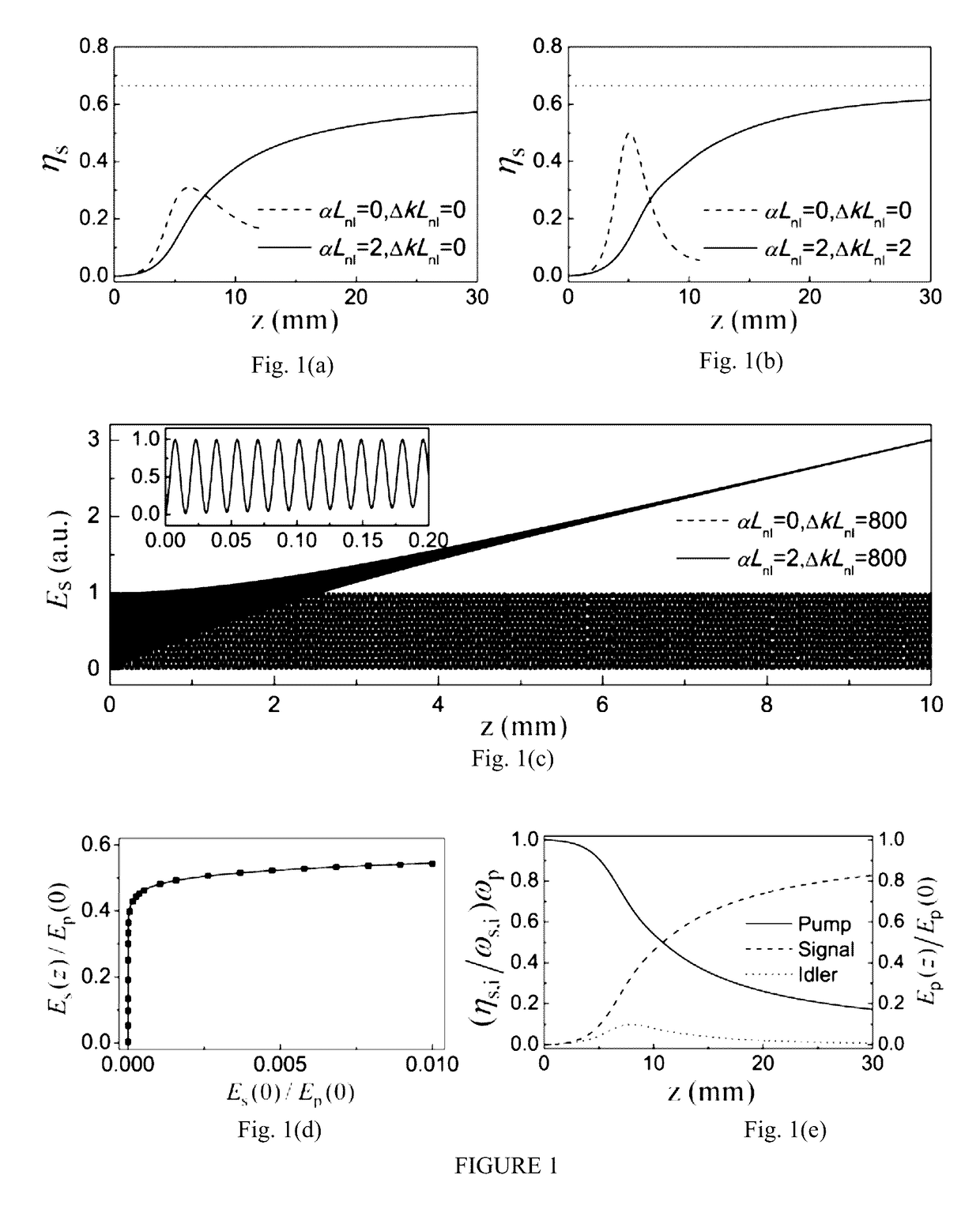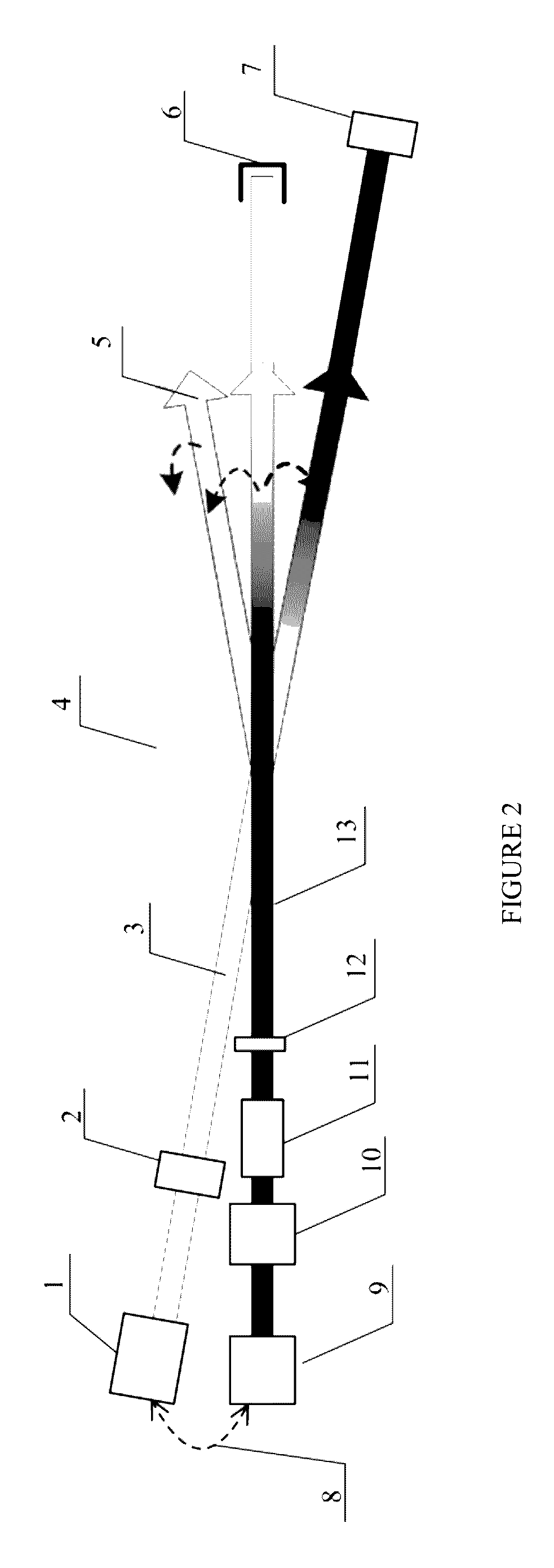Quasi-parametric chirped-pulse amplifier
- Summary
- Abstract
- Description
- Claims
- Application Information
AI Technical Summary
Benefits of technology
Problems solved by technology
Method used
Image
Examples
Embodiment Construction
[0020]The present invention is further explained in details with the accompanying drawings.
[0021]Referring to FIG. 1(a) to FIG. 1(e) of FIG. 1, the conceptual basis of our proposed QPA scheme is OPA, which is theoretically addressed first by focusing on the back-conversion effect. Standard nonlinear coupled-wave equations in full dimensions, numerically solved by the symmetrized split-step Fourier method, are adopted for the simulations shown in FIG. 1, where the crystal absorption at idler (absorption coefficient is a) is included. In the simulations, all the linear effects (i.e., diffraction, dispersion, temporal, and spatial walk-off) are neglected. The wavelengths of the three interacting waves are set to 532 nm (pump), 810 nm (signal), and 1,550 nm (idler), respectively. Thus, the theoretical efficiency limit of the signal is around 66% as indicated by the horizontal dashed lines in FIGS. 1(a) and 1(b). Theoretically, a Gaussian pump laser is adopted in FIGS. 1(a), 1(c), 1(d), ...
PUM
 Login to View More
Login to View More Abstract
Description
Claims
Application Information
 Login to View More
Login to View More - R&D
- Intellectual Property
- Life Sciences
- Materials
- Tech Scout
- Unparalleled Data Quality
- Higher Quality Content
- 60% Fewer Hallucinations
Browse by: Latest US Patents, China's latest patents, Technical Efficacy Thesaurus, Application Domain, Technology Topic, Popular Technical Reports.
© 2025 PatSnap. All rights reserved.Legal|Privacy policy|Modern Slavery Act Transparency Statement|Sitemap|About US| Contact US: help@patsnap.com



